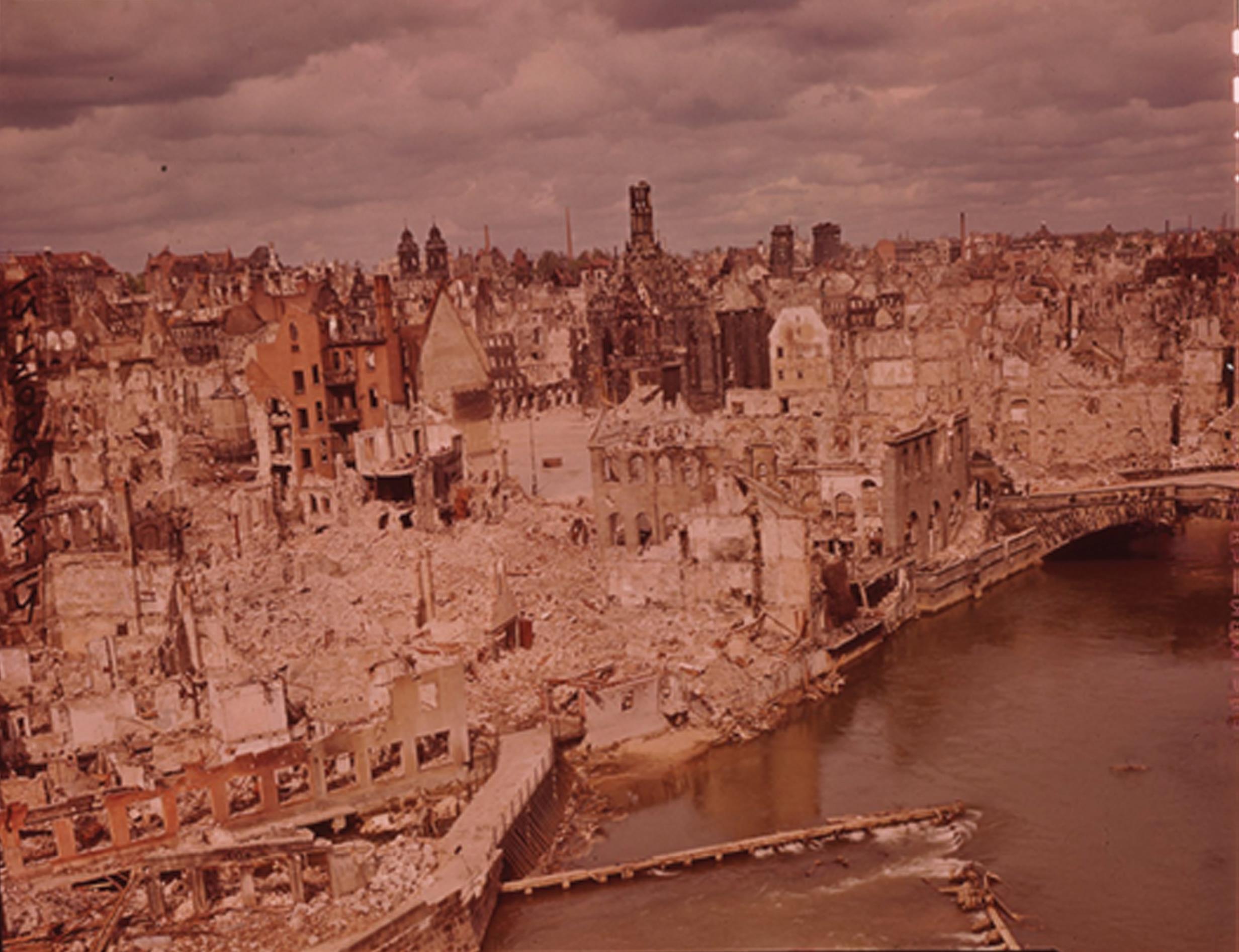Air Raids
Despite existing evacuation programmes, many children remained in the cities with their families, regardless of the dangers posed by air raids.
One of the German cities that suffered widespread destruction through bombs is Nuremberg. After the war, local schoolchildren wrote essays and drew pictures about their wartime experiences which show how terrifying the attacks had been for them.




